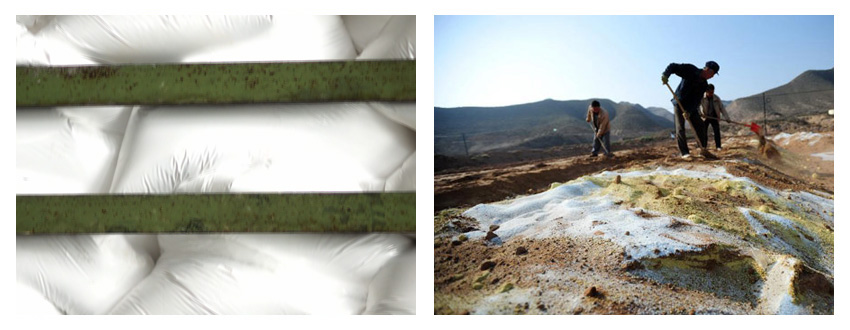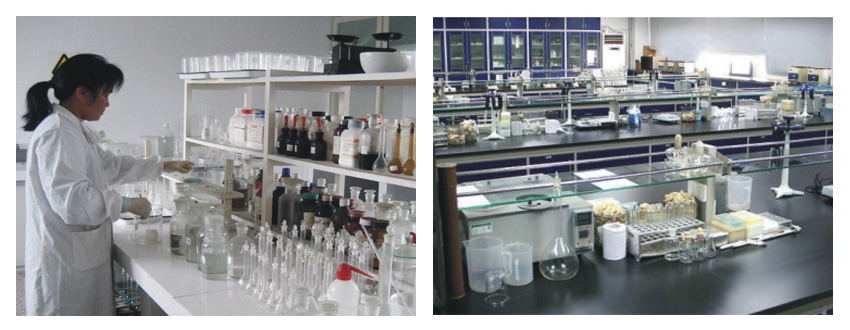
At present SAP On heavy metal pollution in soil remediation of start-ups , There are many problems to be studied. Such as:SAP on an individual and a variety of heavy metal and its scope of effect soil contamination? SAP in soil water and nitrogen and phosphorus under different conditions, single and combined pollution of heavy metals on the curing effect? SAP , plant growth and mechanism of soil mass effect ? SAP in soil fertilizer and heavy metal pollution governance in the of ecological risk evaluation soil heavy metal pollution repair method main including physical, and chemical and biological three big class, which physical repair including physical hot off method, and separation method, and new soil replacement method, and curing stable method and electric power method,, chemical method including solvent extraction method, and chemical leaching method, and passivation method and the oxidation restore method,, biological repair method including microbial repair method, and plant repair method and animal repair method,. Bibliometric analysis show that bioremediation and chemical curing technology and its supporting is the soil heavy metals remediation research and applications. Among them, chemical stability and passive curing is an important direction of development, the principle is added to the soil passivation material, through physical and chemical adsorption, precipitation, complexation and redox effects such as changing the State of heavy metal, increasing the proportion of residues of heavy metals and organic State, reduce the bioavailability of heavy metals. At present, the passivation of heavy metals in farmland-curing materials include lime, clay minerals, phosphate, and mineral absorption materials such as zeolite, as well as organic fertilizer and microbial. SAP was recently found to have a curing effect of heavy metal material.
Cross joint SAP Can promote bacteria in wastewater Cd Zn Stabilization to remove. SAP not only to promote soil conservation soil and decreased soil Cu, andZn, andPb content of soluble State.Found that the polyacrylate salt SAP may change the physical and chemical properties of the soil, soil pH, soil Cu, andCd and Ni , AndZn bioavailability.
Pot experiments show that soil 0.2%SAP Can reduce soil of the sorghum Cd And the bioavailability of plant growth. Containing heavy metals Cu, andPb, andAl, andAs such as remediation of contaminated mineral waste yard to add SAP application 75-170kg/hm2 , Can improve the soil water retention and nutrient absorption, reduced plant uptake of heavy metals.
SAP Farmland has a direct effect on plants, there is through the improvement of soil physical and chemical properties and the indirect effects of soil organisms, through reduced bioavailability of heavy metals in two ways. Pot experiments proved that environmental material (HA HA, andSAP, fly ash FM and zeolite FS) and composite F1, and F2 、 F3 (RespectivelyFM+SAP+HA+FS 、 FS+HA+SAP 、 FM+SAP+HA ) On the growth of corn, soybean and soil heavy metals Pb 、 Cd Absorption effects. A single environment materials and composite control significantly reduce the absorption of heavy metals Pb, andCd, and promote crop growth. SAP and its composite F3, andF2 on the soil heavy metals Pb, andCd of the curing effect. The comparison,SAP composite can be corn Pb uptake compared to reduce 50% aboveCd reduction 80% Above; SAP Composites the soybean absorbs heavy metals Pb Reduced 69% Above, Cd Reduced 33% Above. Studies have found thatSAP and its composite material of soil Pb, andCd passivation effect of curing and the soil pHand theEC , Organic matter, nutrients, and soil enzyme activities change are closely related.

Qu Guiwei reported using Super absorbent polymers, such as removal of industrial waste water and the feasibility of heavy metals in the soil. Tests found that retaining agents in improving crop root water supply and improve the soil structure at the same time, can significantly reduce the corn, soybean and other crops on absorption of cadmium and lead in soil. Will hydrated manganese oxide nanoparticles mixed into salt water retaining agent in POLYACRYLIC acid, can also improve water retaining agent on Cd (II) absorption capacity, thereby reducing the plants, so that the material can be used for in-situ remediation of cadmium pollution in soil. Discovered and confirmed these previous studies, transfer agent reducing soil cadmium plant. Containing heavy metals Cu, andPb, andAl, andAs such as remediation of contaminated mineral waste yard to add SAP application 75-170kg/hm2 , Can improve the soil water retention and nutrient absorption, reduced plant uptake of heavy metals. From the perspective of removal of copper ions, water retention agent is an ideal material, and larger quantities of water absorbent and water absorption for a long time, the removal of copper ion the better. But it is worth noting is that greater combined capacity of copper ions and water retaining agent.
Light pollution and a wide range of agricultural soils, passivation method is relatively quick feasible method. This fix has low investment, simple operation, without destroying the original soil structure characteristics and effect of its implementation depends on soil and environment has no side effects on heavy metal adsorption and fixation capacity and relatively strong material. Studies have found that water retention agent is a strong water absorbing capacity of the special polymer material, can absorb water, fertilizer, pesticide and then released slowly so as to increase efficiency and efficacy, and harmless to the human body, no pollution has been widely applied in many areas, especially in agriculture. Super absorbent polymers can be divided into starch, cellulose and synthetic polymers, their common point is the molecule with a large number of carboxyl and hydroxyl groups, so in theory, they can be by complexing adsorption of heavy metal ions, removing it from the environment.
